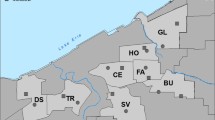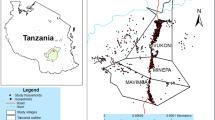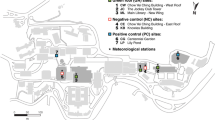Abstract
Fogging with insecticides is one of the main control measures for adult mosquito populations employed in countries that are affected by dengue. In many such countries, urban communities are increasingly characterised by high-density residence in high-rise condominia. Although fogging is typically applied at the ground level, its efficacy in three-dimensional urban environments is poorly understood. Here, we investigated the effect of fogging on vector mosquito distribution and abundance in high-rise condominia by conducting a before-after fogging survey. We showed that although mosquitoes were significantly concentrated at the lower levels in high-rise condominia, they were found throughout the three-dimensional environments. Fogging did not significantly alter this distribution or abundance pattern across any floor level. Thus, any fogging effect was short-lived as mosquito populations recovered within a few days before the subsequent scheduled treatment. In addition, increasing fogging frequency within practicable limits did not prolong the intended control effect. As urban mosquitoes are increasingly insusceptible to fogging due to insecticide resistance and vertical avoidance, this study demonstrates the need to implement other mosquito control strategies for high-rise condominia to manage mosquito populations.
Graphical Abstract



Similar content being viewed by others
References
Ab Hamid N, Mohd Noor SN, Isa NR, Md Rodzay R, Effendi Bachtiar, AMet A (2020) Vertical infestation profile of Aedes in selected urban high-rise residences in Malaysia. Tropical Medicine and Infectious Disease 5:114
Agha SB, Tchouassi DP, Bastos ADS, Sang R (2017) Dengue and yellow fever virus vectors: seasonal abundance. Diversity and resting preferences in three Kenyan cities. Parasites and Vectors 10:628.
Ali MM, Al-Kodmany K (2012) Tall buildings and urban habitat of the 21st century: a global perspective. Buildings 2:384–423
Amelia-Yap ZH, Chen CD, Sofian-Azirun M, Low VL (2018) Pyrethroid resistance in the dengue vector Aedes aegypti in Southeast Asia: present situation and prospects for management. Parasites & Vectors 11:332
Bates D, Maechler M, BolkerB Walker S (2015) Fitting Linear Mixed-Effects Models Using lme4. Journal of Statistical Software 67:1–48
Carrasco D, Lefevre T, Moiroux N, Pennetier C, Chandre F, Cohuet A (2019) Behavioural adaptations of mosquito vectors to insecticide control. Current Opinion in Insect Science 34:48–54
Chilaka N, Perkins E, Tripet F (2012) Visual and olfactory associative learning in the malaria vector Anopheles gambiae sensu stricto. Malaria Journal 11:27
Cuthbert RN, Pattison Z, Taylor NG, Verbrugge L, Diagne C, Ahmed DA, Leroy B, Angulo E, Briski E, Capinha C, Catford JA, Dalu T, Essl F, Gozlan RE, Haubrock PJ, Kourantidou M, Kramer AM, Renault D, Wasserman RJ, Courchamp F (2021) Global economic costs of aquatic invasive alien species. Science of the Total Environment 775:145238
Da Cruz Ferreira DA, Gegener CM, de Almeida Marques-Toledo C, Bendati MM, Teixeira Fetzer LO., CP, Eiras AE, (2017) Meteorological variables and mosquito monitoring are good predictors for infestation trends of Aedes aegypti, the vector of dengue, chikungunya and Zika. Parasites and Vectors 10:98
Elder M, Cortes F, de Siqueira Teixeira, Filha N, Araujo de Tranca GV, Degroote S et al (2018) Scoping review on vector-borne diseases in urban areas: transmission dynamics, vectorial capacity and co-infection. Infectious Diseases of Poverty 7:90
Farajollahi A, Healy SP, Unlu I, Gaugler R, Fonseca DM (2012) Effectiveness of ultra-low volume nighttime applications of an adulticide against diurnal Aedes albopictus, a critical vector of dengue and chikungunya viruses. PLoS ONE 7:e49181
Faridah L, Fauziah N, Agustian D et al (2022) Temporal correlation between urban microclimate, vector mosquito abundance, and dengue cases. Journal of Medical Entomology 59:1008–1018
Gatton ML, Chitnis N, Churcher T, Donnelly MJ, Ghani AC et al (2013) The importance of mosquito behavioural adaptations to malaria control in Africa. Evolution 67:1218–1230
Gubler DJ (2011) Dengue, urbanization and globalization. Tropical Medicine and Health 39:3–11
Guo C, Zhou Z, Wen Z, Liu Y, Zeng C et al (2017) Global epidemiology of dengue outbreaks in 1990–2015: a systematic review and meta-analysis. Frontiers in Cellular and Infection Microbiology 7:37
Harburquer L, Lucia A, Licastro S, Zerba E, Masuh H (2012) Field comparison of thermal and non-thermal ultra-low-volume applications using water and diesel as solvents for managing dengue vector, Aedes aegypti. Tropical Medicine & International Health 17:1274–1280
Harrington J, Kroegar A, Runge-Ranzinger S, O’Dempsey T (2013) Detecting and responding to a dengue outbreak: evaluation of existing strategies in country outbreak response planning. Journal of Tropical Medicine 2013:756832
Hartig F. (2020) DHARMa: Residual Diagnostics for Hierarchical (Multi-Level / Mixed) Regression Models. R package version 0.3.2.0.
Hassan H, Shohaimi S, Hashim NR (2012) Risk mapping of dengue in Selangor and Kuala Lumpur, Malaysia. Geospatial Health 7:21–25
Ishak IH, Jaal Z, Ranson H, Wondji CS (2015) Contrasting patterns of insecticide resistance and knockdown resistance (kdr) in the dengue vectors Aedes aegypti and Aedes albopictus from Malaysia. Parasites & Vectors 8:181
Koenraadt CJ, Aldstadt J, Kijchalao U, Kengluecha A, Jones JW, Scott TW (2007) Spatial and temporal patterns in the recovery of Aedes aegypti (Diptera: Culicidae) populations after insecticide treatment. Journal of Medical Entomology 44:65–71
Lau SM, Vythilingam I, Doss JI, Sekaran SD, Chua TH et al (2015) Surveillance of adult Aedes mosquitoes in Selangor, Malaysia. Tropical Medicine & International Health 20:1271–1280
Lee NSM, Clements GR, Ting ASY, Wong ZH, Yek SH (2020b) Persistent mosquito fogging can be detrimental to non-target invertebrates in an urban tropical forest. PeerJ 8:e10033
Lee JM, Wasserman RJ, Gan JY, Wilson RF, Rahman S, Yek SH (2020a) Human activities attract harmful mosquitoes in a tropical urban landscape. Ecohealth 17:52–63.
Leong CS, Vythilingam I, Liew JW, Wong ML, Wan-Yusoff WS, Lau YL (2019) Enzymatic and molecular characterization of insecticide resistance mechanisms in field populations of Aedes aegypti from Selangor, Malaysia. Parasites & Vectors 12:236.
Liew C., Curtis C.F., 2004. Horizontal and vertical dispersal of dengue vector mosquitoes, Aedes aegypti and Aedes albopictus, in Singapore. Medical and Veterinary Entomology 18:351–360.
Maimusa HA, Ahmad AH, Kassim NF, Rahim J (2016) Age-stage, two-sex life table characteristics of Aedes albopictus and Aedes aegypti in Penang Island, Malaysia. Journal of the American Mosquito Control Association 32:1–11
Mani TR, Arunachalam N, Rajendran R, Satyanarayana K, Dash AP (2005) Efficacy of thermal fog application of deltacide, a synergized mixture of pyrethroids, against Aedes aegypti, the vector of dengue. Tropical Medicine & International Health 10:1298–1304
Medeiros MC, Boothe EC, Brendan Roark E, Hamer GL (2017) Dispersal of male and female Culex quinquefasciatus and Aedes albopictus mosquitoes using stable isotope enrichment. PLoS Neglected Tropical Diseases 11:e0005347
Meyers JI, Pathikonda S, Popkin-Hall ZR, Medeiros MC, Fuseini G et al (2016) Increasing outdoor host-seeking in Anopheles gambiae over 6 years of vector control on Bioko Island. Malaria Journal 15:239
Ndenga BA, Mulaya NL, Musaki SK, Shiroko JN, Dongus S, Fillinger U (2016) Malaria vectors and their blood-meal sources in an area of high bed net ownership in western Kenya highlands. Malaria Journal 15:76
Nur Aida H, Dieng H, Ahmad AH, Satho T, Nurita AT et al (2011) The biology and demographic parameters of Aedes albopictus in northern Peninsular Malaysia. Asian Pacific Journal of Tropical Biomedicine 1:472–477
Ong J, Aik J, Ng LC (2021) Short report: adult Aedes abundance and risk of dengue transmission. PLoS Neglected Tropical Diseases 15:e0009475
Packierisamy PR, Ng CW, Dahlui M, Inbaraj J, Balan VK, Halasa YA, Shepard DS (2015) Cost of dengue vector control activities in Malaysia. American Journal of Tropical Medicine and Hygiene 93:1020–1027
Perich MJ, Rocha NO, Castro AL, Alfaro AW, Platt KB, Solano T, Rowley WA (2003) Evaluation of the efficacy of lambda-cyhalothrin applied by three spray application methods for emergency control of Aedes aegypti in Costa Rica. Journal of the American Mosquito Control Association 19:58–62
Pincebourde S, Murdock CC, Vickers M, Sears MW (2016) Fine-scale microclimate variation can shape the responses of organisms to global change in both natural and urban environments. Integrative & Comparative Biology 56:45–61
Rasli R, Lee HL, Wasi Ahmad N, Fikri S, Ali R et al (2018) Susceptibility status and resistance mechanisms in permethrin-selected, laboratory susceptible and field collected Aedes aegypti from Malaysia. InSects 9:43
Rohani A, Chu WL, Saadiyah L, Lee HL, Phang SM (2001) Insecticide resistance status of Aedes albopictus and Aedes aegypti collected from urban and rural areas in major towns of Malaysia. Tropical Biomedicine 18:29–39
Roslan MA, Shafie A, Ngui R, Lim YAL, Sulaiman WYW (2013) Vertical infestation of the dengue vectors Aedes aegypti and Aedes albopictus in apartments in Kuala Lumpur, Malaysia. Journal of the American Mosquito Control Association 29(4):328–336
Sougoufara S, Diedhiou SM, Doucoure S, Diagne N, Sembene PM, Harry M, Trape JF, Sokhna C, Ndiath MO (2014) Biting by Anopheles funestus in broad daylight after use of long-lasting insecticidal nets: a new challenge to malaria elimination. Malaria Journal 13:125
Sudsom N, Techato K, Thammapalo S, Chongsuvivatwong V, Pengsakul T (2015) High resurgence of dengue vector populations after space spraying in an endemic urban area of Thailand: a cluster randomized controlled trial. Asian Pacific Journal of Tropical Biomedicine 5:965–970
Townroe S, Callaghan A (2014) British container breeding mosquitoes: the impact of urbanisation and climate change on community composition and phenology. PLoS ONE 9:e95325
Vinauger C, Lutz EK, Riffell JA (2014) Olfactory learning and memory in the disease vector mosquito Aedes aegypti. Journal of Experimental Biology 217:2321–2330
Weedall GD, Mugenzi LMJ, Menze 351 BD, Tchouakui M, Ibrahim SS et al. (2019) A cytochrome P450 allele confers pyrethroid resistance on a major African malaria vector, reducing insecticide-treated bednet efficacy. Science Translational Medicine 11:eaat7386.
WHO (2009) Dengue guideline for diagnosis, treatment, prevention and control. World Health Organization (WHO), Geneva, Switzerland.
Zainon N, Mohd Rahim FA, Roslan D, Abd-Samat AH (2016) Prevention of Aedes breeding habitats for urban high-rise building in Malaysia. PlAnning Malaysia 5:115–128
Acknowledgements
This work was funded by the Monash University Malaysia (MUM), Tropical Medicine and Biology Platform to RS, School of Science and MUM School of Science Seed Grant to YSH. The authors thank all condominium committees and management teams for the support received during the survey in the condominiums.
Author information
Authors and Affiliations
Corresponding author
Supplementary Information
Below is the link to the electronic supplementary material.
Rights and permissions
Springer Nature or its licensor (e.g. a society or other partner) holds exclusive rights to this article under a publishing agreement with the author(s) or other rightsholder(s); author self-archiving of the accepted manuscript version of this article is solely governed by the terms of such publishing agreement and applicable law.
About this article
Cite this article
Lee, J.M., Wasserman, R.J., Wilson, R.F. et al. Limited Effect of Ground Floor Fogging on Mosquito Distribution in High-Rise Condominia. EcoHealth 20, 65–73 (2023). https://doi.org/10.1007/s10393-023-01629-8
Received:
Revised:
Accepted:
Published:
Issue Date:
DOI: https://doi.org/10.1007/s10393-023-01629-8




